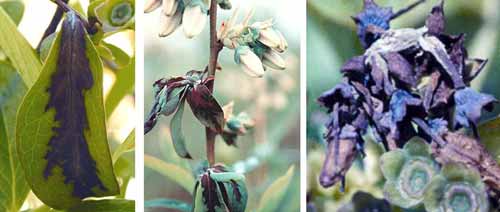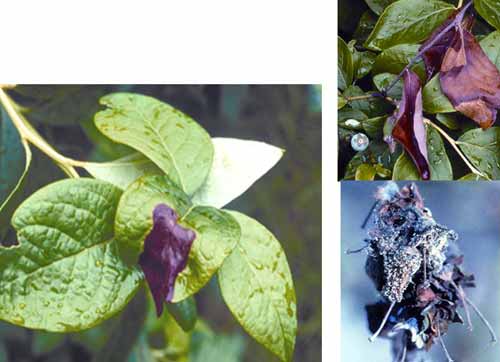Grand Rapids, Mich., area small fruit regional report – May 7, 2013
Preparations for early season small fruit management: disease and insect problems.
Small fruit crops continue developing without major challenges, giving growers high expectations for a good small fruit crop, especially for blueberry growers. Alongside the good weather and intense growth of all small fruit crops (blueberries, strawberries and brambles), insects, fungal diseases and weeds are flourishing at this time. All these problems require intensive management and scouting for an effective and sustainable pest management program.
In blueberries, plant development is advancing very fast. At this moment, flower bud development goes all the way from tight cluster to pink bud stage. So far the most advanced stages are found in blueberry fields south of Ottawa County. Base on the plant phenology, the things to look for during the following 10-day period are mummy berry shoot strike symptoms as well as symptoms of Botrytis blight, or gray mold (see pictures below). These symptom will be more evident in areas of the field were the intense rains from the past allowed for a prolonged period of wet and humid conditions, especially close to wooded areas. On the other hand, Botrytis blight symptoms will show up in cold spots of the filed in areas where blossoms are opened. Although Botrytis blight is not very frequent in Michigan’s blueberry fields, this exceptional cold and wet spring may trigger sporadic outbreaks in fields located in cold spots or low lands.

Symptoms of mummy berry infections in blueberry shoots and flowers.
Photo credits: Annemiek Schilder, MSU

Symptoms of Botrytis blight in blueberry leaves, twigs and blossoms.
Photo credits: Annemiek Schilder, MSU
For effective management of these two diseases, the appropriate fungicide and the right cover during the application are critical. The Michigan State University Extension recommendation for the control of these two diseases relies on fungicide treatments. However, in cases where both mummy berry and Botrytis blight are present, a single fungicide application may not be enough because fungicides effective against mummy berry are not very effective for the control of Botrytis blight, with the exception of Quash that is effective against both diseases. If you need to use this product, do not make two consecutive applications and no more than three per season. For a complete recommendation for the control and management of these diseases, please consult the 2013 Michigan Fruit Management Guide (MSU Extension Bulletin E-154).
Regarding insect pest problems associated with the bloom period and early fruit development stages, it is necessary to prepare the trapping material and the required equipment to initiate the scouting of cherry and cranberry fruitworms in blueberries. Currently, the amount of growing degree days (GDD) base 50 degrees Fahrenheit accumulated in west central Michigan since March 1 is on average 171 GDD. (From January to March 1 only 3 to 3.7 GDD were accumulated.) According to our research on the phenology of cherry fruitworms in Michigan, overwintering adults emerge in the region around 238 ± 30 GDD and the egglaying period starts at 432 ± 15 GDD (Base 50 F) accumulated after March 1. These values are biofix points to start the forecast of the cherry fruitworm population dynamics.
On the basis of this information, it is important to notice the required amount of growing degree days for the beginning of the cherry fruitworm adults is only 68 growing degree days away. Currently, daily growing degree day accumulation in west central Michigan goes for 10 to 15 growing degree days per day. Therefore, under the current weather conditions, we are expecting the cherry fruitworm emergence within the next five to seven days.
Cherry fruitworm pheromone traps should be already out in the field. During this early portion of the cherry fruitworm monitoring, traps should be inspected twice a week in order to establish with accuracy the biofix (beginning of the sustained moth catch) to initiate the first insecticide applications.



 Print
Print Email
Email




